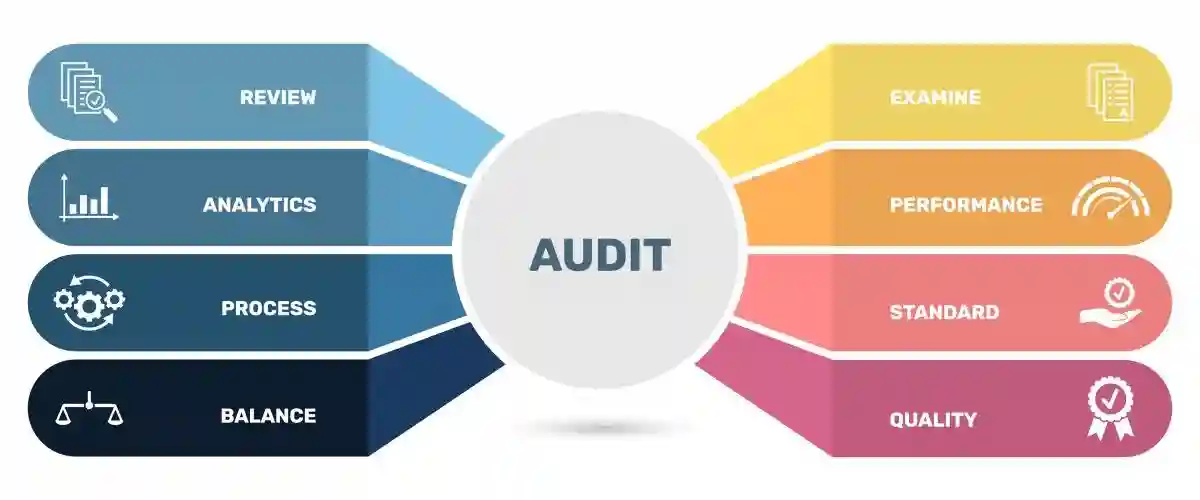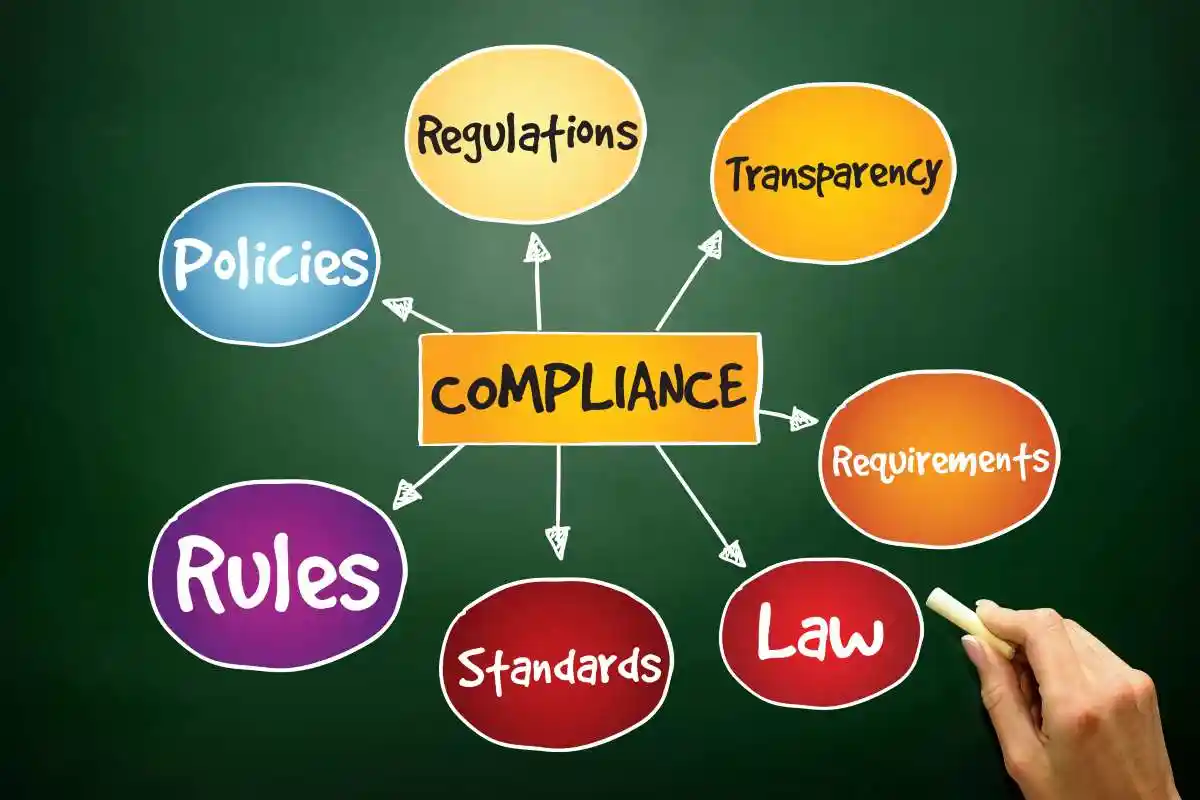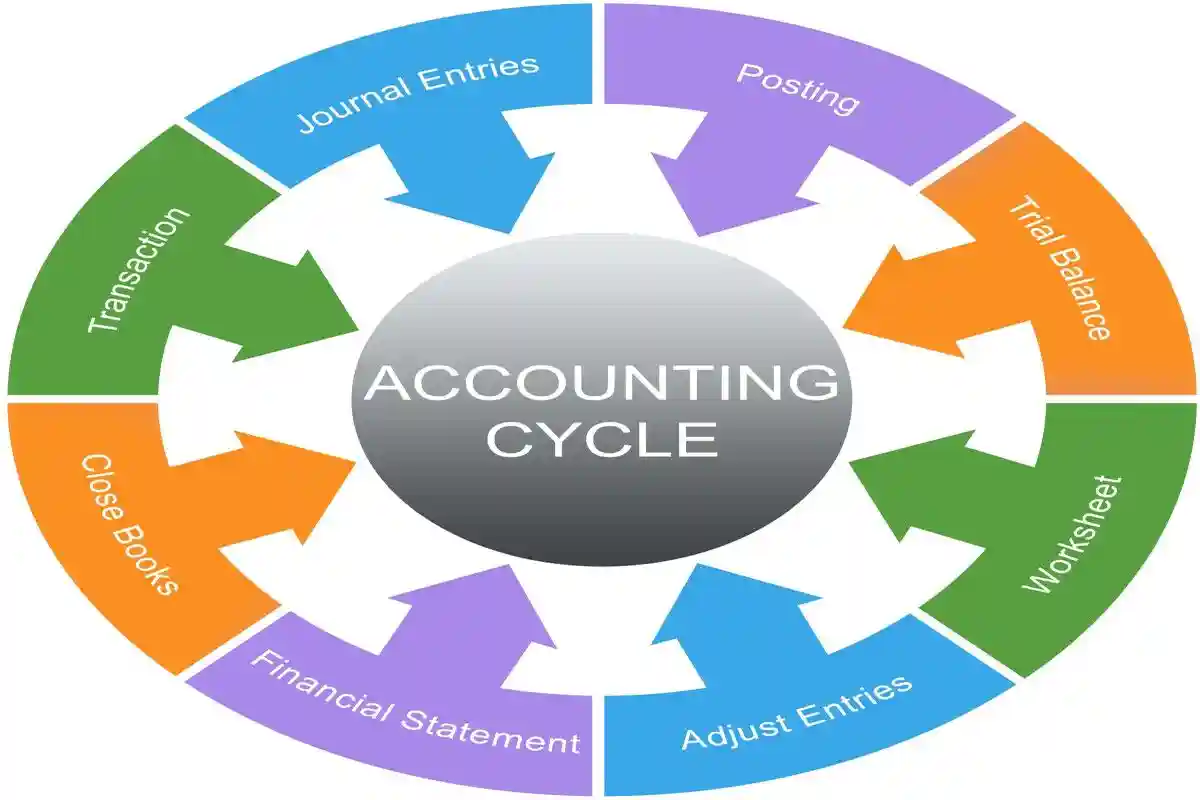Introduction to Understanding Financial Statement Fraud
- Understanding Financial Statement Fraud: Financial statement fraud represents one of the most significant threats to market integrity and investor confidence in modern capital markets. This sophisticated form of deception requires shareholders to develop a comprehensive understanding of its mechanisms, warning signs, and behavioral patterns to protect their investments effectively.
- Financial Statement Fraud: The deliberate misrepresentation or strategic omission of material information in a company’s financial reports designed to deceive stakeholders and manipulate their decision-making processes. This deceptive practice encompasses a range of sophisticated techniques, including revenue manipulation, expense misclassification, asset misrepresentation, and the concealment of significant liabilities or other material information. Perpetrators typically execute these schemes to artificially enhance a company’s perceived value, achieve predetermined financial targets, or obscure fraudulent activities. Financial statement fraud stands as one of the most financially devastating forms of occupational fraud, often resulting in significant investor losses and severe market disruptions.
- Complex Financial Instruments: Modern financial markets have witnessed an increasing prevalence of sophisticated financial instruments, including derivatives, structured products, and complex off-balance-sheet arrangements. These intricate financial tools can significantly complicate the process of accurately assessing a company’s true financial position and performance. The inherent complexity of these instruments often provides opportunities for manipulation and concealment of fraudulent activities. To address these challenges, comprehensive transparency in financial disclosures becomes paramount, requiring detailed explanations of these instruments’ nature, risks, and potential impacts on the company’s financial position.
- Methods: The execution of financial statement fraud typically involves multiple sophisticated techniques working in concert. Common methodologies include strategic revenue manipulation through premature recognition or fictional sales, deliberate expense misclassification or deferral, systematic asset value inflation, and the intentional omission of material liabilities. Perpetrators often combine these methods with complex accounting treatments and opaque disclosures to obscure their fraudulent activities from stakeholders and auditors.
- Artificially Inflate Value of Company: Companies engaging in financial statement fraud frequently aim to create an illusion of superior financial performance or stronger financial position. This deception serves multiple purposes: attracting investors, securing favorable financing terms, meeting analyst expectations, or concealing operational difficulties. The artificial inflation of company value through fraudulent reporting represents one of the most costly forms of occupational fraud, often resulting in significant market capitalization losses when discovered.
The Most Common Types of Financial Statement Fraud
Common types of financial statement fraud include
- Improper revenue recognition: This sophisticated deception involves various techniques to manipulate reported revenues. Companies may prematurely recognize sales before completing all performance obligations, create entirely fictitious transactions, or employ complex shipping arrangements to undisclosed warehouses to record shipments as legitimate sales. Additionally, organizations might intentionally misclassify non-recurring gains or one-time events as regular revenue to create an appearance of sustained profitability and growth.
- Improper asset valuation: This fraudulent practice occurs when organizations deliberately overstate their assets’ value on the balance sheet. Common techniques include inflating inventory valuations through phantom stock or manipulated counts, overstating property and equipment values, misrepresenting investment portfolios, or maintaining artificially high accounts receivable balances through inadequate allowances for doubtful accounts. Companies might also manipulate asset values by improperly applying depreciation methods or failing to recognize asset impairments when required.
- Concealment of liabilities: Organizations employ various strategies to underreport or hide financial obligations, thereby presenting a more favorable debt profile and risk assessment to stakeholders. Common concealment methods include utilizing off-balance-sheet financing arrangements, deliberately omitting known expenses, failing to record or disclose significant loan obligations, or understating warranty and contingent liability exposures.
- Manipulation of expenses: Companies may systematically understate their expenses to artificially inflate reported net income. This manipulation often involves improperly capitalizing routine operating costs, deliberately delaying expense recognition beyond appropriate accounting periods, or failing to record accruals for known obligations. These techniques create a distorted picture of operational efficiency and profitability.
- Improper disclosures: Financial statements can be rendered materially misleading through the omission or inadequate disclosure of significant information. Critical areas requiring transparent disclosure include related-party transactions, contingent liabilities, significant subsequent events, and material business risks. The strategic omission of these disclosures can significantly impact stakeholders’ ability to make informed decisions.
- Misappropriation of assets: This fraud variant involves manipulating financial statements to conceal the theft or unauthorized use of company assets. Perpetrators may create fictitious expenses, alter transaction records, or manipulate account reconciliations to hide their fraudulent activities. This type of fraud often requires complex schemes to disguise the missing assets and their related financial impact.
Common Financial Statement Fraud Schemes
Scheme Type | Description | Example |
Fictitious Revenue | Recording non-existent sales | Counterfeit sales transactions, Bill and hold arrangements |
Premature Revenue Recognition | Recording revenue before earned | Accelerating revenue before service delivery |
| Scheme Type | Description | Example |
| Channel Stuffing | Artificially inflating sales by forcing excessive inventory onto distributors | Shipping significantly more product than distributors can reasonably sell, often with undisclosed rights of return or special payment terms, to meet quarterly revenue targets. This practice creates a temporary illusion of strong sales performance while potentially leading to future returns and revenue reversals. |
| Asset Overstatement | Deliberately inflating the reported value of company assets through various manipulative techniques | Creating phantom inventory through falsified counts and records, applying inadequate depreciation rates to overstate asset values, manipulating asset impairment assessments, and maintaining artificially high accounts receivable balances through insufficient bad debt reserves. |
| Liability Concealment | Strategic hiding or underreporting of significant financial obligations to present a more favorable financial position | Deliberately omitting known debt obligations, structuring complex off-balance-sheet financing arrangements, understating warranty liabilities through manipulated estimates, and failing to record or disclose contingent liabilities that could materially impact the company’s financial health. |
| Material Omissions | Intentionally withholding critical information that would significantly influence stakeholder decisions | Failing to disclose substantial related party transactions, omitting significant business risks or uncertainties, concealing pending litigation or regulatory investigations, and withholding information about material subsequent events that could impact financial performance. |
| Journal Entry Manipulation | Systematic falsification of accounting records through strategic journal entries | Making unauthorized adjusting entries near reporting deadlines to achieve desired financial results, creating fictitious entries to conceal fraudulent activities, and manipulating account reconciliations to hide discrepancies. |
How Financial Statement Fraud Is Committed
- Fictitious revenue: Organizations create entirely fabricated sales transactions using sophisticated schemes involving fake customers, counterfeit documentation, and complex circular transactions. These schemes often involve multiple layers of deception, including falsified shipping documents, manipulated payment records, and carefully constructed audit trails designed to withstand initial scrutiny.
- Bill-and-hold schemes: Companies manipulate revenue recognition through complex arrangements where products are billed but intentionally held in company-controlled locations. These schemes typically involve detailed agreements with customers that may appear legitimate but lack genuine commercial substance. The arrangements often include undisclosed side agreements or special terms that would prevent revenue recognition under proper accounting standards.
- Channel stuffing: This deceptive practice involves pressuring distributors to accept excessive inventory levels through various incentives or coercion. Companies may offer extended payment terms, special discounts, or return rights while concealing these arrangements from auditors and investors. The practice artificially inflates current period sales while creating significant risks of future returns and revenue reversals.
- Altering accounting records: Perpetrators systematically modify accounting entries and supporting documentation to create a false financial narrative. This manipulation often involves sophisticated techniques to override internal controls, including unauthorized system access, altered electronic records, and carefully timed adjusting entries designed to avoid detection during routine audits.
- Hiding liabilities: Organizations employ complex financial structures and transactions to conceal significant obligations from their balance sheets. These schemes may involve creating special purpose entities, utilizing sophisticated financing arrangements, or structuring transactions to avoid liability recognition under technical accounting guidelines while still maintaining effective financial obligations.
Consequences of Committing Financial Statement Fraud
- Legal penalties: Perpetrators face severe legal consequences including substantial monetary fines, criminal prosecution, and potential imprisonment. Companies may incur significant legal defense costs, face multiple regulatory investigations, and be subject to enhanced oversight requirements that increase operational costs and complexity.
- Loss of investor confidence: The discovery of fraudulent financial reporting typically triggers immediate and severe market reactions. Companies often experience dramatic stock price declines, credit rating downgrades, and withdrawal of institutional investor support. The reputational damage can persist long after the fraud’s discovery, making it difficult to rebuild market credibility and access capital markets effectively.
- Corporate collapse: In severe cases, financial statement fraud can lead to complete organizational failure. The combination of legal penalties, market value destruction, and operational disruption can create insurmountable challenges. This outcome often results in widespread job losses, supplier payment defaults, and significant economic impact on local communities and industry sectors.
- Empowering Whistleblowers: Organizations must establish comprehensive anonymous reporting systems that protect and encourage employees to report suspicious activities without fear of retaliation. These systems should include multiple reporting channels, such as confidential hotlines, secure web portals, and designated compliance officers. Companies must ensure robust protection mechanisms, including strict confidentiality protocols, anti-retaliation policies, and clear procedures for investigating reported concerns. Additionally, organizations should consider implementing reward programs that recognize and compensate whistleblowers who provide credible information leading to the detection of significant fraud. Companies must also carefully evaluate their incentive structures, particularly those tied to short-term performance metrics, as aggressive performance targets can inadvertently create pressure for fraudulent behavior.
Advanced analytical techniques
- Anomaly detection: Sophisticated machine learning algorithms now serve as powerful tools for automatically identifying suspicious transactions that deviate from established patterns of normal business behavior. These systems utilize advanced statistical methods to analyze vast amounts of transaction data in real-time, flagging unusual patterns that may indicate fraudulent activity. The algorithms continuously learn and adapt to new patterns, improving their detection accuracy over time while reducing false positives. Modern anomaly detection systems can process multiple data streams simultaneously, considering factors such as transaction timing, amount, frequency, and counterparty relationships.
- Benford’s Law analysis: This sophisticated statistical technique examines the distribution of first digits in numerical datasets to identify potential manipulation. The analysis is particularly effective in detecting fabricated numbers in financial records, as fraudulent figures typically don’t follow natural mathematical patterns. When applied to large datasets like invoice amounts, expense reports, or journal entries, Benford’s Law analysis can reveal suspicious patterns that warrant further investigation. The technique is especially valuable for identifying systematic manipulation in accounting records where manual detection would be impractical.
- Link analysis: Advanced graph technology enables analysts to construct complex relationship maps between various entities within the organization’s ecosystem. These sophisticated visualization tools can reveal hidden connections between employees, vendors, transactions, and other relevant entities that might indicate collusion or fraudulent schemes. The technology can process massive datasets to identify subtle patterns and relationships that might escape traditional analysis methods. Modern link analysis tools often incorporate machine learning capabilities to automatically identify suspicious relationship patterns and potential fraud rings.
- Predictive modeling: By leveraging historical fraud cases and advanced machine learning techniques, organizations can develop sophisticated models that assess fraud risk in real-time. These models analyze numerous variables and indicators to calculate the probability of fraudulent activity, enabling preventive action before losses occur. The systems continuously learn from new data and outcomes, improving their predictive accuracy over time. Modern predictive models can incorporate both structured and unstructured data sources, including transaction records, communication patterns, and behavioral indicators, to provide comprehensive fraud risk assessment.
Understanding the Landscape of Accounting Fraud in 2025
- Accounting Fraud Landscape: The evolving landscape of accounting fraud in 2025 presents unprecedented challenges and opportunities shaped by rapid technological advancement and regulatory evolution. The integration of artificial intelligence, blockchain technology, and sophisticated data analytics has transformed both fraud perpetration and detection capabilities. As a business leader, understanding this dynamic environment is crucial for implementing effective fraud prevention strategies. The landscape is characterized by increasingly complex schemes that exploit technological vulnerabilities while attempting to evade enhanced detection methods.
- Enhancing Transparency: Global regulatory bodies have implemented more stringent oversight mechanisms and compliance requirements to combat financial misconduct. These enhanced regulations focus on promoting transparency and accountability through mandatory disclosures, standardized reporting frameworks, and robust internal control requirements. Organizations must stay current with these evolving regulatory demands to ensure compliance and minimize fraud risk. The regulatory landscape continues to adapt to new fraud schemes and technological capabilities, requiring organizations to maintain flexible and responsive compliance programs.
- Globalization of Markets: The increasing interconnectedness of global financial markets has created additional complexities in fraud detection and prevention efforts. Cross-border transactions and international business relationships can obscure fraudulent activities through complex ownership structures and jurisdictional differences. Organizations must implement sophisticated monitoring systems capable of tracking and analyzing transactions across multiple jurisdictions and regulatory frameworks. Understanding these global complexities is essential for developing effective fraud prevention strategies that address both local and international risks.
- Management override of controls: Senior leadership’s ability to bypass established internal control mechanisms represents a significant risk factor in asset misappropriation. When executives circumvent controls, whether to expedite business objectives or facilitate personal gain, it establishes a dangerous precedent throughout the organization. This behavior effectively signals to employees that control policies are discretionary rather than mandatory, potentially triggering a cascade of control breaches across multiple organizational levels. The impact becomes particularly severe when override patterns become normalized within the corporate culture.
- Poor hiring practices: Inadequate employee screening protocols, particularly for positions with access to valuable assets, create substantial vulnerability to fraud. Organizations that fail to conduct comprehensive background investigations, including criminal history checks, employment verification, and financial status reviews, risk hiring individuals with concerning behavioral patterns or financial pressures that could motivate fraudulent activities. The absence of thorough reference checks and credential verification can allow candidates with previous instances of misconduct to gain positions of trust.
Physical and information safeguards
- Inadequate physical controls: The failure to implement robust physical security measures creates direct opportunities for asset misappropriation. This encompasses insufficient security protocols for cash storage, inadequately protected inventory warehouses, and poorly monitored access to valuable equipment. Organizations must maintain stringent physical barriers, surveillance systems, and access protocols proportionate to asset value. The absence of dual-control procedures for high-value areas and inadequate documentation of asset movements further compounds these vulnerabilities.
- Weak access controls: Insufficient controls over system access and electronic records pose significant risks in today’s digital business environment. Organizations lacking robust authentication protocols, regular access reviews, and comprehensive audit trails become vulnerable to unauthorized data access and fraudulent transaction processing. The failure to implement proper segregation of duties within digital systems and inadequate monitoring of user activities can allow fraudulent schemes to persist undetected.
Recording and documentation
- Poor record keeping: Deficient documentation practices severely compromise an organization’s ability to maintain effective fraud prevention controls. Missing or incomplete transaction records, inadequate supporting documentation, and poorly maintained audit trails create opportunities for concealing fraudulent activities. The absence of standardized documentation procedures and regular record reconciliation processes makes detecting and investigating suspicious transactions significantly more challenging.
- Lack of independent checks: The absence of regular, independent verification procedures represents a critical control weakness. Organizations must conduct routine reconciliations of accounts, assets, and transactions through personnel independent from the original processing functions. Without these independent checks, discrepancies can remain undetected for extended periods, allowing fraudulent schemes to grow in scope and complexity.
- Failure to enforce mandatory vacations: The importance of mandatory vacation policies extends beyond employee well-being to fraud prevention. When employees engaging in fraudulent activities maintain continuous control over their responsibilities, they can more effectively conceal their schemes. Mandatory vacation periods, combined with temporary duty reassignment, often lead to the discovery of ongoing fraud as different employees assume responsibilities and identify irregularities.
Technology and automation
- Insufficient use of automation: Over-reliance on manual processes in today’s technological environment creates unnecessary fraud risks. Manual systems are inherently more susceptible to manipulation and error than automated controls. Organizations should leverage available technology to implement automated reconciliations, exception reporting, and transaction monitoring. The failure to automate key control functions represents a missed opportunity to enhance fraud prevention capabilities.
- Failure to update technology: Operating with outdated systems exposes organizations to unnecessary fraud risks. Legacy systems often lack modern security features, automated control capabilities, and audit trail functionality essential for effective fraud prevention. Organizations must maintain current technology infrastructure that incorporates advanced fraud detection algorithms, real-time monitoring capabilities, and sophisticated data analytics tools.
- Poorly integrated systems: Disjointed technology infrastructure creates control gaps that fraudsters can exploit. When systems operate in isolation without proper integration, reconciliation becomes more challenging, and suspicious patterns may go unnoticed. Organizations need seamlessly integrated systems that enable comprehensive transaction monitoring, automated cross-validation, and holistic data analysis for effective fraud prevention.
- A poor “tone at the top” fundamentally undermines an organization’s control environment by eroding ethical standards and compliance culture. When senior leadership fails to demonstrate commitment to control policies and ethical behavior, it creates a permissive environment where fraud can flourish. This leadership failure manifests through various mechanisms that collectively weaken the organization’s fraud prevention capabilities.
- “They’re doing it too”: The phenomenon of employees taking behavioral cues from their superiors represents a critical vulnerability in organizational ethics. When employees observe managers engaging in questionable practices, such as inflating expense reports, misappropriating company resources for personal benefit, or displaying leniency toward minor policy violations, it creates a dangerous ripple effect throughout the organization. This observed behavior serves as implicit permission for staff to rationalize their own dishonest actions through the justification that “if management does it, it must be acceptable.” The psychological impact of leadership modeling unethical behavior can rapidly erode compliance culture across all organizational levels.
- Rewarding results over ethics: Organizations that cultivate a culture focused exclusively on achieving aggressive performance targets while disregarding the methods used to reach those goals create substantial fraud risks. When management demonstrates an unwavering emphasis on meeting profit objectives without consideration for ethical implications or procedural integrity, it sends a clear message that results trump responsible business practices. This intense pressure to deliver can drive employees to manipulate financial data, falsify reports, or engage in fraudulent schemes to avoid negative performance consequences. The prioritization of short-term results over sustainable ethical practices often leads to increasingly aggressive accounting manipulations and outright fraud.
Erosion of trust and control
- Weakened whistleblower protections: Organizations that fail to maintain robust whistleblower protection mechanisms severely compromise their fraud detection capabilities. When management exhibits patterns of ignoring reported misconduct or, more concerningly, retaliating against employees who raise ethical concerns, it effectively dismantles the organization’s early warning system. Given that employee tips consistently represent the primary mechanism through which fraud schemes are initially detected, a compromised reporting system removes a crucial defense against fraudulent activities. The chilling effect of perceived retaliation can silence potential whistleblowers, allowing fraud schemes to persist and expand unchecked.
- Reduced morale and loyalty: The development of a toxic organizational culture characterized by low employee morale has direct implications for fraud risk. When employees feel disconnected from or antagonistic toward their organization due to perceived mistreatment, unfair practices, or ethical compromises, their psychological barriers to committing fraud diminish significantly. This erosion of loyalty reduces the moral hesitation that might otherwise prevent employees from engaging in fraudulent activities. Employees who feel betrayed or undervalued by their organization often find it easier to rationalize fraudulent behavior as justified retribution.
- Disregard for monitoring: Leadership teams that demonstrate indifference toward internal control mechanisms create environments highly susceptible to fraud. When management fails to prioritize and enforce essential monitoring activities such as regular account reconciliations, inventory counts, or surprise audits, it significantly increases the opportunity for fraudulent activities to occur and persist undetected. This negligent approach to oversight often manifests in reduced frequency of control activities, cursory execution of required checks, and inadequate follow-up on identified discrepancies. The cumulative effect of these monitoring deficiencies creates multiple avenues for fraud perpetration while simultaneously reducing the likelihood of timely detection.
The Consequences of Revenue Recognition Fraud
Financial standing
- While asset misappropriation may not represent the most financially devastating form of fraud, its cumulative impact can significantly undermine an organization’s financial health. Research conducted by the Association of Certified Fraud Examiners (ACFE) has established that the median loss per incident of asset misappropriation reaches $120,000, highlighting the substantial financial risk these schemes pose to organizational stability.
Legal penalties
- The legal ramifications of fraudulent activities extend far beyond monetary losses. Organizations and individuals found culpable face extensive legal exposure, including substantial monetary penalties, stringent regulatory sanctions from oversight bodies such as the Securities and Exchange Commission, and potential criminal prosecution resulting in imprisonment.
Loss of investor confidence
- The revelation of fraudulent activities invariably triggers severe erosion of market confidence. This loss of trust typically manifests in dramatic stock price declines, resulting in significant wealth destruction for investors and potentially triggering a cycle of divestment and market value deterioration.
Reputational damage
- The disclosure of fraud inflicts lasting reputational harm that extends well beyond immediate financial impacts. Organizations struggle to rebuild stakeholder trust, often experiencing sustained difficulty in attracting and retaining customers, business partners, and talented employees.
Corporate collapse
- In severe cases, the exposure of systematic fraud can trigger catastrophic organizational failure. The resulting financial instability frequently leads to bankruptcy proceedings and devastating losses for employees, shareholders, and other stakeholders. Historical examples like Enron and WorldCom vividly illustrate how fraudulent practices can destroy even seemingly robust enterprises.
The Role of Securities Litigation in Addressing Fake Revenue
- Securities Litigation: Functions as an essential enforcement mechanism for addressing fraudulent revenue inflation schemes, providing crucial deterrence against financial misrepresentation.
- Legal Avenue: The securities litigation framework offers vital legal recourse for investors and stakeholders who have suffered losses due to fraudulent financial reporting practices, enabling them to seek compensation and accountability.
- Securities Litigation and Enforcement: Securities litigation represents a complex and multifaceted legal framework designed to address fraudulent activities in financial markets. These proceedings can manifest through various channels, including class-action lawsuits where multiple affected investors collectively seek redress, targeted enforcement actions initiated by regulatory authorities like the Securities and Exchange Commission (SEC), and specialized arbitration proceedings designed to resolve securities-related disputes efficiently.
The Primary Objective of Securities Litigation
- Primary Objective: Securities litigation serves as a fundamental mechanism for establishing accountability within financial markets by holding companies and their executive leadership directly responsible for fraudulent activities that harm investors. This accountability framework acts as a crucial deterrent against potential misconduct while simultaneously providing pathways for investor compensation.
- Accountability: The implementation of securities litigation creates a robust system of accountability that extends throughout the corporate structure. By imposing significant financial and reputational consequences for fraudulent behavior, these legal proceedings effectively signal to market participants that unethical conduct will face stringent legal repercussions. This accountability mechanism helps maintain market integrity by deterring potential wrongdoers and reinforcing the importance of accurate financial reporting.
- Compensation: Securities litigation plays a vital role in providing financial restitution to affected investors who have suffered losses due to fraudulent activities. Through various legal mechanisms, these proceedings can help recover and redistribute funds to investors who were misled by false or misleading information, thereby partially mitigating the financial impact of corporate fraud on individual portfolios.
Understanding the Role of Securities Litigation
- Securities Litigation Objective: A comprehensive understanding of securities litigation’s role proves essential for both corporate entities and investors operating in modern financial markets. This knowledge enables stakeholders to better navigate the complex legal landscape while protecting their interests and maintaining market integrity.
- Companies: For corporate entities, securities litigation underscores the critical importance of maintaining rigorous transparency standards and ensuring strict compliance with established financial regulations. Companies must recognize that effective fraud prevention and robust internal controls represent crucial defenses against potential securities litigation exposure. This understanding drives organizations to implement comprehensive compliance programs and maintain high standards of corporate governance.
- Investors: From an investor perspective, securities litigation awareness highlights the fundamental necessity of conducting thorough due diligence and maintaining vigilant oversight of investment positions. By understanding the mechanisms and implications of securities litigation, investors can better assess potential risks while conducting more effective analysis of companies’ financial health and governance practices. This knowledge empowers stakeholders to leverage securities litigation as a powerful tool for protecting their investments and contributing to overall market integrity.
THE SECURITIES LITIGATION PROCESS
The securities litigation process follows a structured sequence of legal procedures designed to address fraudulent activities effectively:
- Filing the Complaint: The process initiates when a lead plaintiff files a detailed lawsuit on behalf of similarly affected shareholders. This complaint must comprehensively outline specific allegations against the company, including particular instances of fraudulent behavior and resulting damages.
- Motion to Dismiss: Following the complaint filing, defendants typically respond by submitting a motion to dismiss, challenging the legal sufficiency of the claims presented in the securities class action lawsuit. This critical early stage often determines whether the case proceeds to discovery.
- Discovery: Upon denial of the motion to dismiss, both parties engage in an extensive evidence-gathering phase. This process involves collecting and analyzing vast amounts of documentation, including internal communications, financial records, and witness testimonies. The discovery phase often proves particularly resource-intensive and time-consuming.
- Motion for Class Certification: Plaintiffs must petition the court to certify the litigation as a class action. Courts evaluate various factors including the number of affected parties, commonality of claims, and adequacy of class representation before granting certification.
- Summary Judgment and Trial: Following class certification, parties may file motions for summary judgment seeking to resolve the case without trial. If these motions fail to resolve the dispute, the matter proceeds to trial, though this outcome remains relatively rare in securities litigation.
- Settlement Negotiations and Approval: Most securities litigation cases conclude through negotiated settlements, often facilitated by professional mediators. Courts must review and grant preliminary approval to ensure settlement terms meet standards of fairness and adequacy.
- Class Notice: After preliminary settlement approval, formal notice is distributed to all class members, typically through mail, detailing settlement terms and claim filing procedures.
- Final Approval Hearing: Courts conduct final hearings to review potential objections and grant definitive approval of settlement terms.
- Claims Administration and Distribution: A court-appointed administrator manages the complex process of notice distribution, claim processing, and settlement fund distribution, typically allocating funds proportionally based on recognized losses.
Prevention strategies
Organizations can implement comprehensive internal controls and foster ethical corporate cultures to protect against financial statement fraud and minimize securities litigation exposure.
- Implement strong internal controls: Organizations must establish and rigorously enforce comprehensive segregation of duties across all financial operations. This critical control mechanism ensures that no single individual maintains exclusive control over crucial financial transaction components – from initiation and authorization to recording and reconciliation. Additionally, organizations should implement robust, multi-layered access controls protecting accounting systems through sophisticated authentication protocols, regular access reviews, and detailed audit trails of system activities. These controls should undergo periodic testing and updates to address emerging risks and technological changes.
- Set an ethical “tone at the top”: Executive leadership and senior management must consistently demonstrate unwavering commitment to ethical behavior, integrity, and transparency through both words and actions. This commitment should manifest through regular communications emphasizing ethical priorities, swift responses to reported concerns, and visible modeling of ethical decision-making. Leaders should actively participate in ethics training programs, openly discuss ethical challenges, and ensure that performance evaluations and advancement decisions prominently feature ethical conduct considerations. The organization’s ethical culture should cascade from leadership through all organizational levels.
- Perform regular audits: Organizations must maintain a comprehensive audit program incorporating both independent external audits and robust internal audit functions. External audits should be conducted by reputable firms with industry-specific expertise, while internal audit teams require adequate resources, authority, and independence to effectively execute their oversight responsibilities. Audit scope should extend beyond standard financial statement testing to include detailed evaluations of internal control effectiveness, compliance with established policies, and specific fraud risk assessments. Regular rotation of audit firms or lead partners helps maintain objectivity and fresh perspectives.
- Establish a whistleblower program: Companies must develop and maintain sophisticated whistleblower mechanisms that guarantee confidentiality and protect reporters from any form of retaliation. These programs should offer multiple reporting channels – including anonymous hotlines, web-based platforms, and designated ethics officers – ensuring accessibility across all organizational levels. Clear policies should detail the investigation process, timeline expectations, and feedback mechanisms. Regular training should educate employees about available reporting channels and emphasize the organization’s commitment to protecting whistleblowers. The program should include tracking metrics to evaluate effectiveness and identify potential systemic issues.
- Limit performance-based bonuses: Organizations should carefully structure executive compensation packages to avoid excessive emphasis on short-term financial metrics that might incentivize aggressive or fraudulent accounting practices. Compensation committees should implement balanced scorecards incorporating multiple performance dimensions – including long-term value creation, customer satisfaction, operational excellence, and ethical conduct. Bonus calculations should include clawback provisions triggered by financial restatements or misconduct discoveries. Deferred compensation components and extended vesting periods help align executive interests with sustainable organizational success.
Maintaining Financial Integrity
- Robust Internal Controls: Successful fraud prevention demands a comprehensive internal control framework encompassing preventive, detective, and corrective controls. This framework should address both traditional and emerging risks while adapting to organizational changes and technological advances. Regular control assessments help identify and remediate potential weaknesses before they can be exploited. The control environment must be supported by clear policies, procedures, and accountability mechanisms.
- Ensures Compliance: Organizations must implement systematic processes ensuring financial statements maintain accuracy, completeness, and compliance with evolving accounting standards and regulatory requirements. This involves regular monitoring of regulatory changes, proactive assessment of compliance impacts, and timely implementation of required modifications. Compliance programs should incorporate regular training, testing, and certification processes while maintaining detailed documentation of compliance activities and decisions.
- Motivation: Comprehensive audit programs combining internal and external perspectives provide crucial oversight of financial reporting accuracy and control effectiveness. These programs should employ risk-based approaches focusing resources on areas of greatest concern while maintaining adequate coverage across all significant operations. Regular communication between audit functions helps ensure coordinated coverage and timely identification of emerging issues. Audit findings should receive prompt attention with clear accountability for implementing recommended improvements.
Contact Timothy L. Miles Today for a Free Case Evaluation
If you suffered substantial losses and wish to serve as lead plaintiff in a securities class action, or have questions about securities class action settlements, or just general questions about your rights as a shareholder, please contact attorney Timothy L. Miles of the Law Offices of Timothy L. Miles, at no cost, by calling 855/846-6529 or via e-mail at [email protected]. (24/7/365).
Timothy L. Miles, Esq.
Law Offices of Timothy L. Miles
Tapestry at Brentwood Town Center
300 Centerview Dr. #247
Mailbox #1091
Brentwood,TN 37027
Phone: (855) Tim-MLaw (855-846-6529)
Email: [email protected]
Website: www.classactionlawyertn.com
Visit Our Extensive Investor Hub: Learning for Informed Investors








